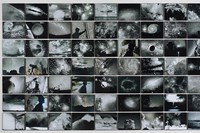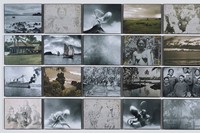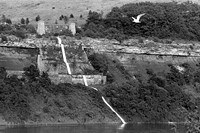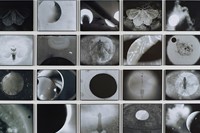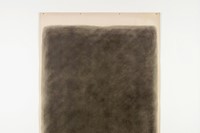Following the recent display of her work at Frieze Masters, we speak to the prolific 83-year-old artist about her extraordinary practice
“I’ve always been motivated by things in nature – not just their place in nature, but how they’re integrated into our psyche; how nature is really necessary for us,” says lauded American land artist Michelle Stuart, on the phone from her studio in Soho, New York. “I believe that some philosophical thought about nature and culture is a driving force in keeping us sane really – today more than ever!” she laughs poignantly. (The US elections are less than a month away, after all.)
At 83, the remarkable creative, whose works skillfully synthesise photography, drawing and sculpture, shows no sign of slowing down. “I’m in my studio every day,” she says matter of factly. Last year she held exhibitions of both new and old work at London’s Parafin gallery and Marc Selwyn Fine Art in Los Angeles, while just last week a captivating selection of her works from the 1970s and 80s – focusing on “ideas of drawing and sculpture, place and memory,” – were shown by Parafin at Frieze Masters, a distinctly meditative stand that proved the perfect antidote to the art fair frenzy.
Stuart discovered her love of art as a child growing up in Los Angeles. “I think I was about 5 years old,” she says. “I did have a few other interests but I would say that when I did a drawing while my mother was at the hairdresser and she came home and put it up on the wall, I decided that it was a good thing to do! I’m kind of joking, but it’s true: it was what made me happiest and got my parents’ approbation.” She went on to study at Chouinard Art Institute and thereafter worked as a topological draftsperson until a burgeoning passion for Pre-Columbian culture saw her move to Mexico. There she secured a job assisting Mexican painter and husband to Frida Kahlo, Diego Rivera, whose work she much admired. A devoted traveller, Stuart then relocated to Paris for a spell, before finally settling in New York, where she has remained since 1957.
It was only after arriving in the city that Stuart began to truly immerse herself in her art, experimenting with alternative media, such as soil and rock, which she imprinted into paper or muslin scrolls to create earth rubbings. “I would say I found myself as an artist in the 60s,” she muses. “From the late 60s to the early 70s, I started doing the moon drawings [a series of pencil works exploring the moon’s surface] and then later frottage. I was allowing myself to do stuff that nobody else did, and on a larger scale too. So I was kind of jumping in with all four feet!” Initially Stuart’s work met with some resistance but in the 1970s she caught the eye of acclaimed British art critic Lawrence Alloway, who wrote an article on her work for Art Forum. Widespread critical acclaim, and a demand for the exhibiting of her art, soon followed suit.
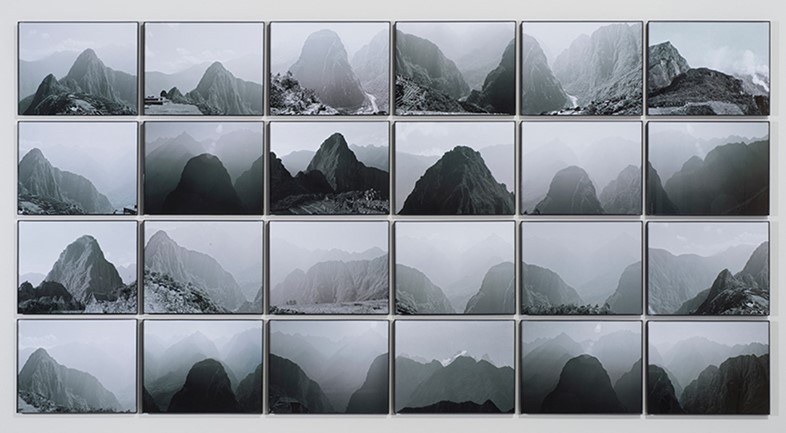
Stuart’s work boasts myriad influences, from history, astronomy and botany to her various travels to ancient archaeological sites. Whether they take the form of drawing, frottage, sculpture or photography (currently her primary medium), her pieces are defined by a transcendent, Romantic quality – standing in front of them, you feel instantly spellbound. She is a master of composition, frequently arranging her works, particularly her photo works, in gridded formats. “I started working with grids very early,” she explains. “I like a geometric base to content, it’s like a rigorous scaffolding for the chaos of the world.” Her Frieze Masters stand showcased a selection of important early works, chosen by the artist herself. Taking centre stage were two ‘scroll works’, #12 Shandaken Veil (1974) and #16 Starmap Peterboro (1974), grey earth rubbings that almost resemble abstract paintings. Both stand at two and a half metres high and hung unframed on the wall, their lower edge curling out towards the viewer – “an unmediated experience of pigment and ground, and by extension with site/place,” as the gallery text succinctly summarised.
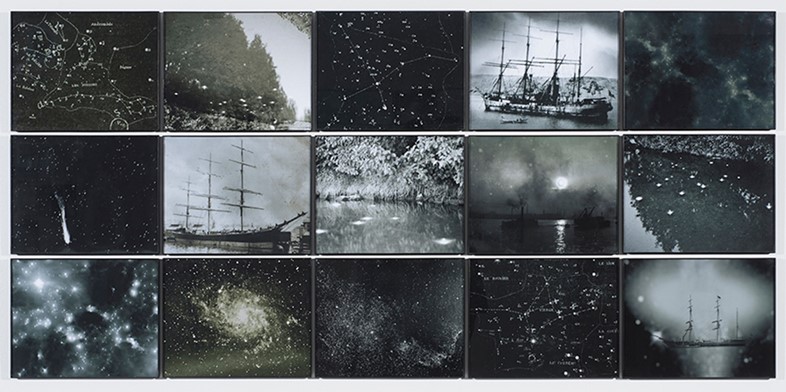
These were surrounded by smaller drawings and sculptural book works, dubbed ‘ledger’, that hold earth and objects from specific sites. Also on display was an exquisite series of small works that Stuart refers to as The Avebury Series. These were created during her first trip to England where she visited the Avebury stone circle and the ancient ridgeway. There she did numerous earth rubbings which she neatly paired with photographs in a powerful testament to the site and its landscape. “It’s perfect there,” she recalls. "There are sheep still grazing and it’s not isolated; you can just walk around it – I did a lot of walking. I suppose it’s personal – some people find magic in those examinations of our place in space and time, and others don’t. But I do.” And it is exactly this sense of magic that Stuart’s work encapsulates.

